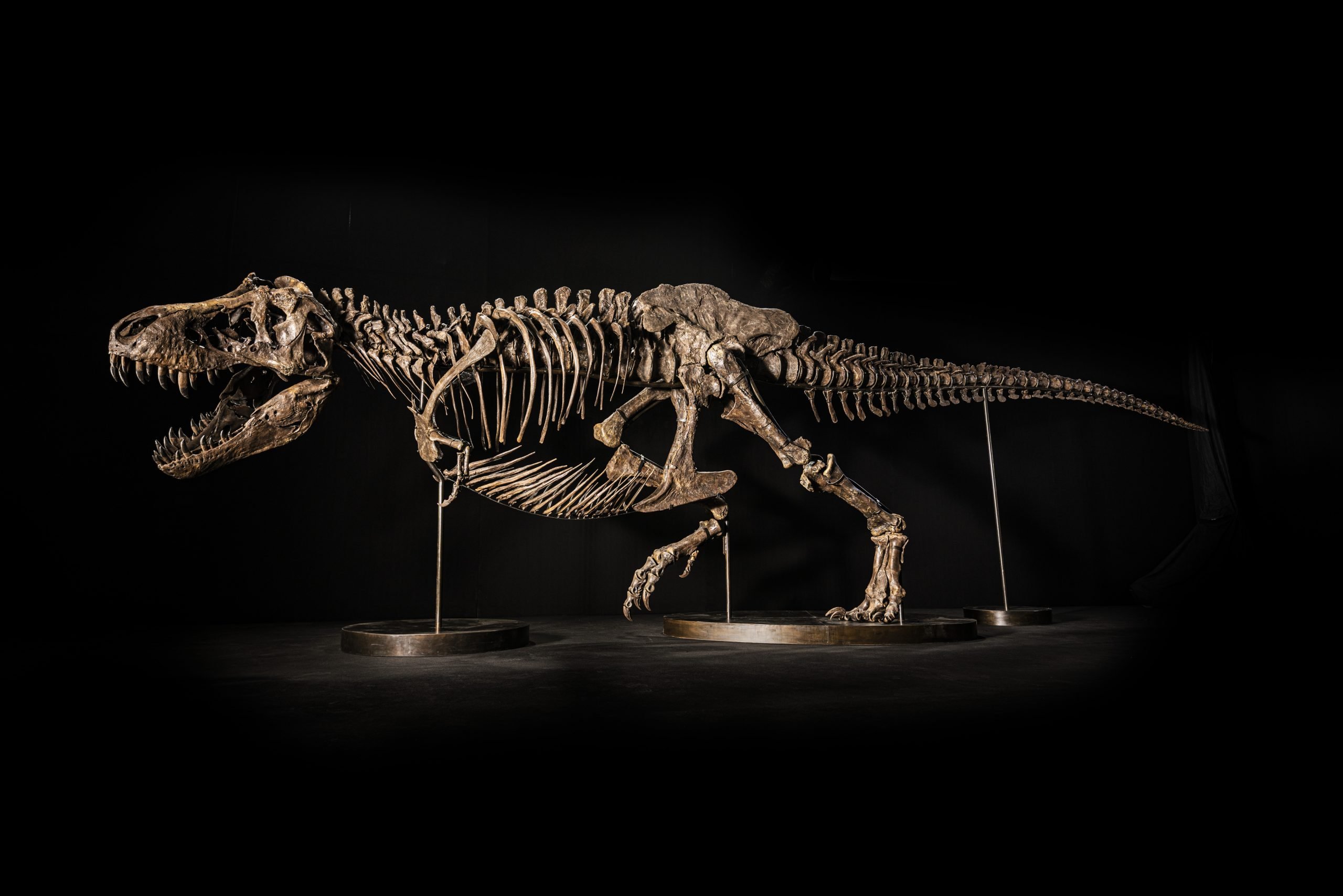
Christie’s hopes for blockbuster numbers at its upcoming evening sale in Hong Kong may have just gone extinct.
Yesterday, the auction house withdrew a prized Tyrannosaurus rex skeleton from the November 30 event after experts raised questions about the uniqueness of the fossil.
“After consultation with the consignor of the Tyrannosaurus rex scheduled for sale on 30 November in Hong Kong, Christie’s has decided to withdraw the lot,” a spokesperson for the company told Artnet News in a statement. The unidentified consignor “has now decided to loan the specimen to a museum for public display.”
Marketing materials for the house’s 20th and 21st-century art evening sale prominently featured the dinosaur, named Shen, boasting that the event would mark the first time that a T. rex skeleton would hit the block in Asia.
It was initially estimated to fetch between $15 million and $25 million—a lofty price range reflective of Christie’s recent success with selling fossils. Just earlier this year, the auction house sold a velociraptor skeleton for $12.4 million, doubling the lot’s presale high estimate of $6 million.
Still, it was another similarly-sized skeleton that set the benchmark for Shen. In 2020, Christie’s auctioned off Stan, one of the largest and most complete T. rex fossils ever excavated, for a record-setting $31.8 million.
But for paleontologists, Shen’s similarity to Stan was a little too close for comfort.
Christie’s sold a nearly complete skeleton of a T-Rex named Stan at its evening sale in November 2020 for $28 million ($31.8 million after fees). Courtesy of Christie’s.
In the weeks leading up to the Christie’s sale, experts at the Black Hills Institute of Geological Research, a private South Dakota-based company that helped excavate Stan and still owns its intellectual property rights, noted that Shen seemed to feature numerous bones cast from their prized specimen.
While it’s common for dinosaur skeletons to include casts of other specimens to appear whole, Christie’s reported that Shen featured just 79 original bones. Stan, by comparison, comprised 190. (Though the T. rex’s total number of bones is unknown, experts estimate it be more than 300.)
“They’re using Stan to sell a dinosaur that’s not Stan,” Black Hills Institute Peter Larson told the New York Times, which first reported the story. “It’s very misleading.”
After a lawyer for Larson reached out to Christie’s with their concerns, the auction house added a note to its online auction materials, noting “replica bones that were added to original bones (referred to as STAN™ elements) were created by, and purchased from, Black Hills Institute of Geological Research, Inc.”
Standing some 16 feet tall and 43 feet long, Shen is believed to have been an adult male that walked the Earth about 67 million years ago. It was unearthed in Montana in 2020.
Upon announcing the inclusion of Shen in the November 30 sale, Francis Belin, president of Christie’s Asia Pacific, called the skeleton “a world-class specimen for museums and institutions.” James Hyslop, the company’s head of science and natural history, said it was “one of the most scientifically studied T. rex skeletons to come to auction.”